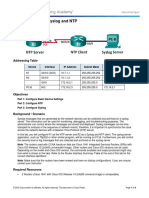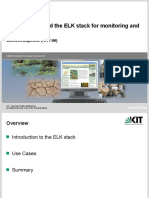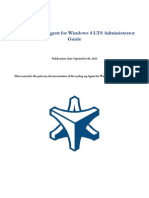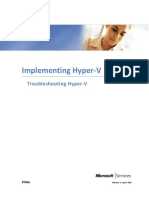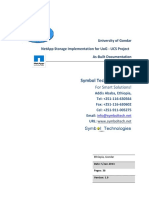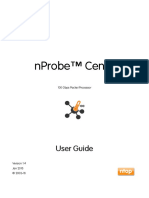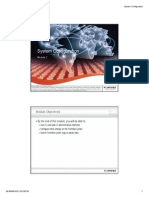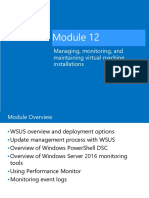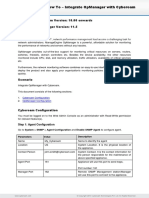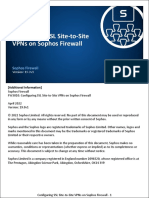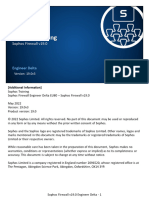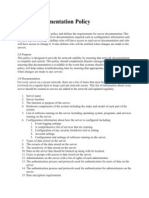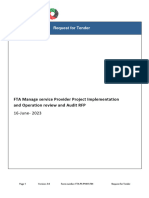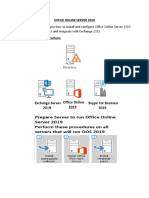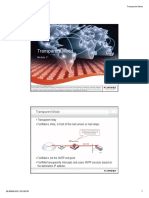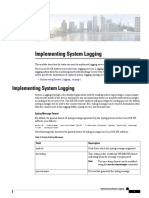0% found this document useful (0 votes)
135 views38 pagesCisco Syslog & SNMP Guide
This document provides information about system message logging (syslog) on networking devices. It describes how syslog works, including the syslog protocol, message formatting, severity levels, facilities, and methods to store messages locally or send them to a remote syslog server for later review. Configuration examples are given for enabling console logging, setting severity levels, and configuring a syslog server IP address.
Uploaded by
Nay OoCopyright
© © All Rights Reserved
We take content rights seriously. If you suspect this is your content, claim it here.
Available Formats
Download as PDF, TXT or read online on Scribd
0% found this document useful (0 votes)
135 views38 pagesCisco Syslog & SNMP Guide
This document provides information about system message logging (syslog) on networking devices. It describes how syslog works, including the syslog protocol, message formatting, severity levels, facilities, and methods to store messages locally or send them to a remote syslog server for later review. Configuration examples are given for enabling console logging, setting severity levels, and configuring a syslog server IP address.
Uploaded by
Nay OoCopyright
© © All Rights Reserved
We take content rights seriously. If you suspect this is your content, claim it here.
Available Formats
Download as PDF, TXT or read online on Scribd
/ 38

